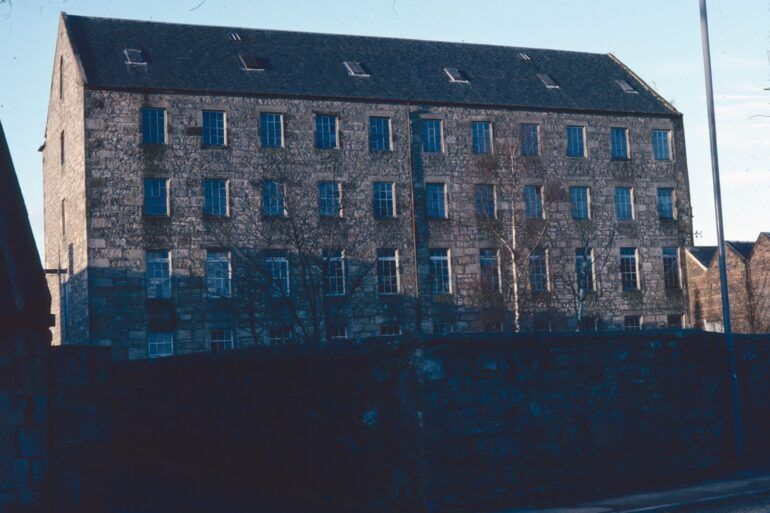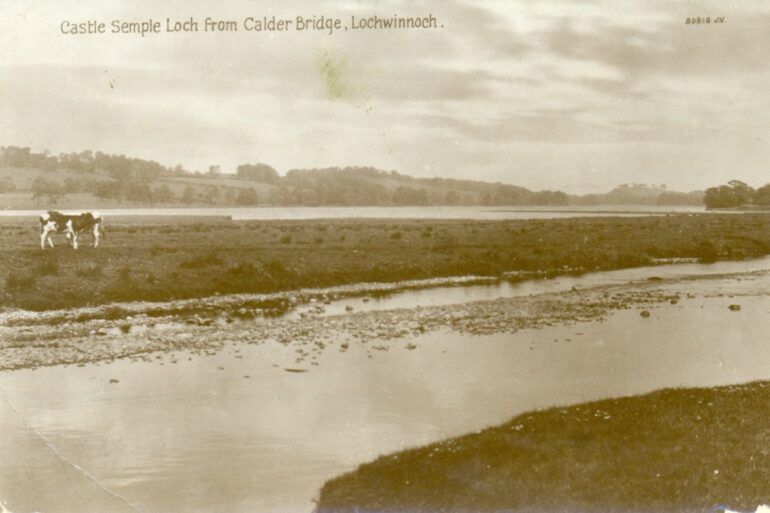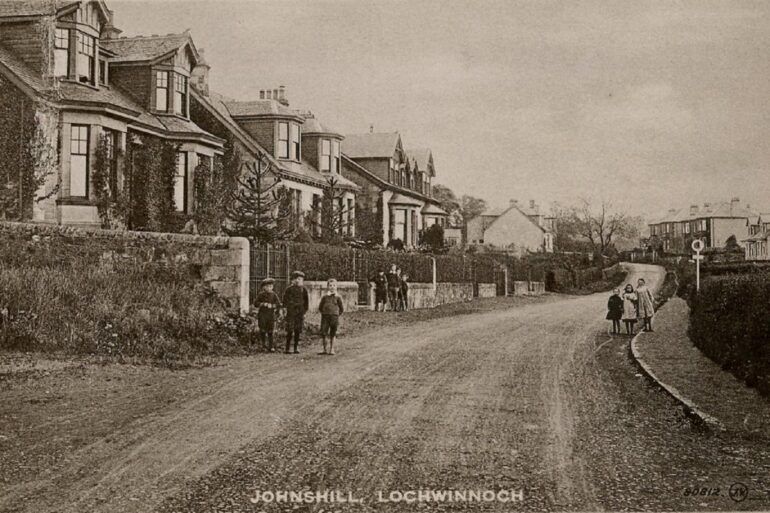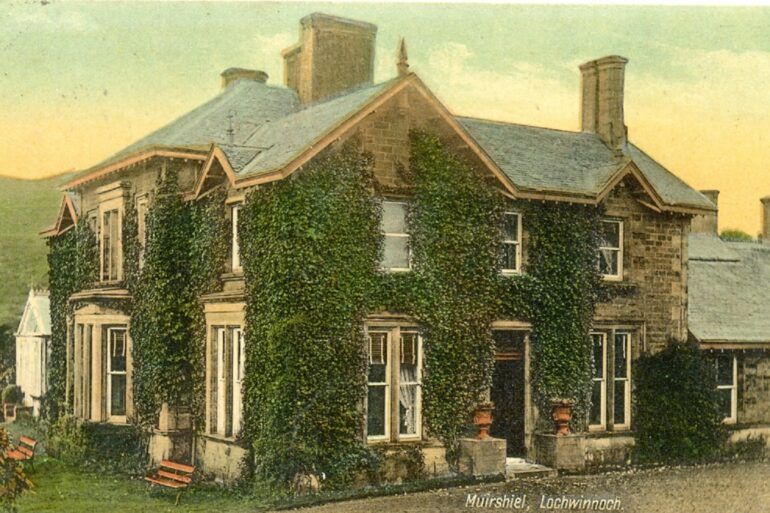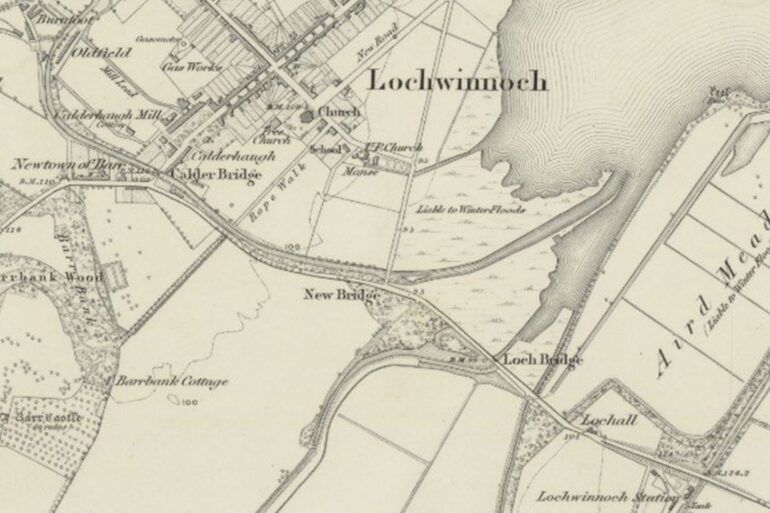There is reason to believe the area now known as Lochwinnoch has been inhabited since the early bronze age of 2300BC.
But to begin to see the formation of this quaint village as it’s seen in modern times, we must leap ahead in time to the latter days of the 12th century.
In 1158, the name Lochwinnoch first appeared on a local charter. As for its origins, it is believed to have been derived from St Winnan, who had passed through the region in the 500’s and whose presence also had a hand in the formation of nearby Kilwinning. Over time, 60 different variations of the name would be recorded until Andrew Crawfurd’s Cairn of Lochwinnoch would finally provide a definitive spelling in the 1800’s.
In the early 1200’s, monks from nearby Paisley Abbey would turn Lochwinnoch into a “kirktoun” and erect a church on the site. During this era, it was mainly an agricultural district. Today, nothing of the original place of worship, nor its official location, remains. In its place, another church would be built and would stand until 1729.
In around 1340, steward of Renfrew, William De Sempill, obtained the lands of Elliotstoun in the Lochwinnoch region, prompting it to become the territorial designation of this powerful feudal family for generations. In turn, this would spark an indelible link between the Lochwinnoch and “Semple” which has persisted until the present day.
By 1474, his descendent John Sempill would expand their hold over the area by acquiring the charter to “Castleton” from King James III himself and within a matter of decades, the first incarnation of Castle Sempill would be built. Erected at the east end of the loch, its creation arrived in conjunction with John Sempill building his own collegiate church in the area and by 1580, it is said that Castle Sempill was a structure of over four stories high. For three centuries, the Sempill lineage remained powerful and influential until in 1727, to Hugh, the 11th Lord Sempill, sold the estate to William Macdowall, a man who’d made his fortune through the transatlantic slave trade and the ownership of Caribbean sugar plantations.
Shortly after taking over the estate, he demolished the 230-year-old Castle Sempill to pave the way for a mansion that was based on the style of Andrea Palladio.
Just as its biggest estate was undergoing a makeover, the fabric of Lochwinnoch was beginning to be altered before its locals’ eyes. In 1729 ,the longstanding church was rendered unfit for purpose, save for its gable end and clock which remains a fixture of the town today and is affectionately referred to as “Auld Simon” by residents. From the early 1720’s, the area pivoted away from agriculture, with the starting pistol on this revolution coming in the form of a thread mill which was built on the banks of the River Calder. Before long, Lochwinnoch’s reputation as an emerging centre of industry was bolstered by the likes of the Locherfield Bleachworks, Mcdowall’s Calderpark Mill (built in 1788) and later, the Caulderhaugh Mill.
By 1799, Lochwinnoch had a population of 500 and with the emergence of other trades in the town, this growth would steadily continue as the village entered the 19th century.
With the advent of the 1800’s came the discovery of vast quantities of the mineral barite which had been discovered near the Hill of Stake in Clyde Muirshiel. As a result, small-scale mining would begin and later, a grinding mill which provided further opportunities for employment for all within the area. Although its supplies were depleted and the work ceased in 1969, the structures built for the mine workings live on today as part of Clyde Muirshiel Visitor Centre.
Following their success in nearby Beith, James Hunter, Henry Hamilton and Robert Crawford would establish the Calder Cabinet works in 1880. By way of this new development, Lochwinnoch would become one of Scotland’s central hubs for furniture making and would provide upholstered goods for a variety of the ocean-liners built on the Clyde shipyards. Over the years, Hunter, Hamilton and Crawford’s factory would be supplemented by the Lochhead Cabinet Works– known to locals as “The Klondyke”– and the Viewfield Cabinet Works.
According to their records, Calder Cabinet Works even transported a train full of chairs to Belfast which were bound for the ill-fated RMS Titanic.
Veering into the 20th century, Lochwinnoch’s portfolio of businesses would take another turn with the establishment of Struthers Lemonade Factory. For almost 100 years until its closure in 2006, this site would produce drinks such as their famed Krystal Klear and Koala Kola. In the case of the latter, they would even find themselves facing legal action from Coca Cola. In a rare case of a triumph for a small business against a team of lawyers, Struthers won the case.
